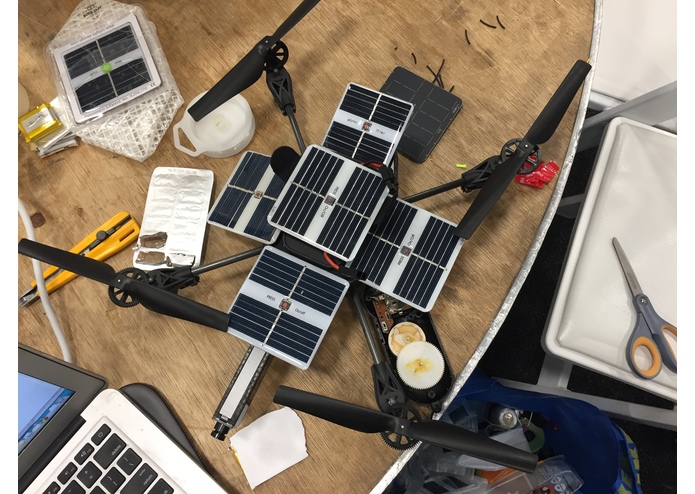Unlock the power of the sun and take your logistics to new heights. In this definitive guide, you will discover everything you need to choose the perfect solar-charged drone delivery system—maximizing flight times, slashing operating costs, and delighting customers with reliable, eco-friendly service.

You’ll learn:
- What ultra-efficient solar drone delivery really means
- The key features to demand in every component
- How to compare top models side by side (plus a handy table)
- Cost, maintenance, and ROI considerations
- Future trends that will keep your fleet ahead of the curve
- Answers to your most pressing FAQs
Ultra-Efficient Solar Drone Delivery Checklist
Use this checklist as your quick reference when evaluating any solar-charged drone delivery system. Tick each box to ensure you don’t miss a critical factor:
- Photovoltaic Panel Efficiency ≥ 25%
- Higher efficiency panels harvest more watts per square meter, boosting endurance (8MSolar)
- Maximum Flight Endurance ≥ 12 hours (sunny conditions)
- Look for proven flights of half-a-day or more (Canadian Science Publishing)
- Lightweight Composite Airframe (< 5 kg)
- Every extra gram cuts payload and efficiency
- Payload Capacity ≥ 2 kg
- Enough for small packages, medical supplies, or spare parts
- Integrated MPPT (Maximum Power Point Tracking)
- Ensures panels always operate at peak power (MDPI)
- Hybrid Power Architecture
- Solar + battery vs. solar-only—hybrids offer reliability in low-sun conditions (arXiv)
- Autonomous Flight Control
- Automated takeoff, navigation, obstacle avoidance, and landing
- Telematics & Data Link ≥ 10 km
- Maintain control and telemetry over long distances
- Rapid Swap Battery Module
- Minimize downtime between missions
- Weather-Resistant Design (IP65 or higher)
- Operate safely in light rain, dust, and variable humidity
- Ease of Maintenance & Parts Availability
- On-site replaceable solar panels and motors
- Regulatory Compliance (FAA/EASA)
- Certified for commercial operations in your region
Top Solar-Powered Drone Delivery Features
When you dig beneath the skin, you’ll find that the best solar drones share these standout capabilities:
- High-Efficiency Solar Cells
- Ultra-thin mono- or polycrystalline cells laminated into the wing surfaces
- Produces up to 200 W/m² under peak sunlight (EnergySage)
- Battery + Solar Hybrid System
- Solar panels trickle-charge lithium-ion battery packs during flight
- Batteries supply surge power for takeoff, ascent, and hovering
- Adaptive Power Management (MPPT)
- Continuously optimizes panel output against load demands (MDPI)
- Lightweight Composites
- Carbon-fiber fuselage and wings reduce weight without sacrificing strength
- Improves power-to-weight ratio, increasing payload or endurance
- AI-Enabled Flight Autonomy
- Real-time route adjustment for optimal sun exposure and wind avoidance
- Automated hotspot detection (e.g., landing zones, charging stations)
- Modular Payload Bays
- Quick-release compartments let you swap deliveries in minutes
- Supports multi-mission flexibility (medical, retail, industrial)
- Integrated Fleet Management Software
- Cloud-based dashboards track drone health, mission status, and solar yield
- Offers predictive maintenance alerts to avoid unexpected downtime
High-Performance Solar Drone Power Systems
Understanding the powerplant beneath the airframe is critical. Here’s what to demand:
| Component | Specification | Why It Matters |
|---|---|---|
| Solar Cell Efficiency | ≥ 25 % (monocrystalline) | Yields more power per wing area, extending flight times in sub-optimal sunlight (8MSolar, Grepow) |
| Battery Capacity | ≥ 100 Wh/kg (Li-ion hybrid pack) | Balances weight vs. reserve energy for launch and low-sun segments |
| MPPT Controller | ≥ 95 % efficiency | Maximizes harvested solar energy under changing insolation (MDPI) |
| Hybrid Fuel Cell | Optional H₂ Fuel Cell add-on | Doubles mission duration under cloudy conditions; ideal for critical deliveries (medical/emergency) (Commercial UAV News) |
| Power Distribution | Redundant ESC channels × 4 | Ensures a single motor failure doesn’t ground the entire drone |
| Thermal Management | Active cooling for PV and ESCs | Prevents efficiency drop at high temps; crucial for equatorial or desert operations |
Best Solar-Charged Drone Models Compared
Below is a side-by-side look at three leading systems you should evaluate:
| Model | Endurance | Payload | Panel Eff. | Max Range | Price (est.) | Use Case |
|---|---|---|---|---|---|---|
| Skydweller Aero | 90 days (The Economic Times) | 5 kg | 20–22 % | Global | > $1 million | Maritime surveillance, extended comms relay |
| Aquila (Facebook) | 3 months (HAPS) (WIRED) | 0.5 kg | 18 % | Stratosphere | R&D only | Internet-beaming pseudo-satellite |
| Puma AE | 9 hours (WIRED) | 1.5 kg | 23 % | 15 km | ~$30 000 | Tactical frontline, first responders |
Cost Analysis of Solar Drone Delivery Systems
You need to account for up-front investment vs. long-term savings:
- Initial CapEx
- High-efficiency PV panels and composite airframes carry premium prices
- Hybrid fuel cell options add $50 000–$200 000 per unit
- Operational OpEx
- Solar recharging cuts electricity costs by up to 80 % (vs. ground-based battery swap) (EnergySage)
- Fewer maintenance cycles—no internal combustion engines or heavy duty fuel filters
- ROI Timeline
- Payback often occurs within 2–3 years for high-frequency routes (> 50 missions/month)
- Specialty use cases (e.g., medical supply in remote regions) achieve ROI even faster
- Hidden Savings
- Reduced need for ground infrastructure (charging stations, fuel depots)
- Improved brand image and potential carbon-credit revenue under ESG initiatives
Maintenance & Operational Best Practices
Keep your solar fleet flying at peak efficiency:
- Daily Pre-Flight Checks
- Inspect PV panels for cracks or delamination

- Verify MPPT and battery state via telemetry logs
- Inspect PV panels for cracks or delamination
- Routine Cleaning
- Wipe panels with mild detergent to remove dust, pollen, or salt spray (for maritime ops)
- Software Updates
- Install firmware patches for flight autonomy and power-management algos
- Seasonal Calibration
- Adjust solar-angle tracking parameters for winter vs. summer sun paths
- Spare Parts Inventory
- Stock replacement panels, ESCs, and servo motors to minimize downtime
Future Trends in Solar Drone Logistics
Stay ahead of the curve by watching these emerging developments:
- Perovskite Solar Cells
- Could achieve > 30 % efficiency at a fraction of current costs (8MSolar)
- Fuel-Cell Hybrids
- Integrating hydrogen fuel cells for guaranteed power in low-sun regions
- Swarm-Based Last-Mile Delivery
- Coordinated fleets that share charging stations and hand off payloads mid-air
- Edge-AI Onboard
- Neural-network–based route optimization reacting in real time to weather and obstacles
- Regulatory Sandboxes
- Dedicated corridors in many countries for test flights, speeding up certification
Frequently Asked Questions
Q1: How do solar panels affect drone aerodynamics?
High-efficiency panels are now flexible and ultra-thin, conforming to wing curvature with minimal drag impact (8MSolar).
Q2: Can solar-only drones fly at night?
Pure solar drones rely on capacitors or batteries to store daytime energy; true 24/7 flight requires a hybrid battery or fuel-cell backup.
Q3: What weather constraints should I plan for?
Design for IP65 or higher to withstand light rain and dust. In high-humidity or persistent cloud cover, ensure a robust battery reserve or fuel-cell support.
Q4: How do I secure regulatory approval?
Work with local aviation authorities—many offer “UAS corridors” to fast-track commercial drone certifications.
Q5: Are there leasing options available?
Several manufacturers now offer “Drone-as-a-Service” models that bundle hardware, maintenance, and software for a fixed monthly fee.
Conclusion
By following this Must-Have Checklist, you ensure your solar-charged drone delivery program delivers on efficiency, reliability, and sustainability.
You’re now equipped to:
- Evaluate critical power, payload, and control features
- Compare leading models side by side
- Run the numbers for cost vs. ROI
- Keep your fleet in top shape with maintenance best practices
- Anticipate future advances that will shape solar drone logistics
Invest in the right tech today, and watch your delivery operations soar—powered by clean, renewable energy.


